Poetry in the pop age
Modern Australians live of course in a concourse or babble of discourses. We make our way through the bubble-and-squeak of chopped-up value systems. There is no tall hierarchy of speakings, no league ladder. Nor is there anything as redgum-solid as permanence; if anything, transience is taken as proof of the genuine. To our juniors, at least, the plotty nightly patter of Home and Away is felt to be more real than the bookbound eloquence of Woman to Man. Consumers of the instantaneous, they would surely rejoice in the contrived spontaneity that gave rise to the following recent news item:
A Manhattan publisher of limited-edition art books appears to have hit on the ultimate in ephemeral art – a poem published on computer disc that self-destructs as it is read. Ninety-five special editions are priced at $2,550 each with 350 limited editions at $640.
These may appear to be the monstrous products of the Grand Academy of Lagado, but they point to something real in modern consciousness: a craving for the purely ephemeral.
Louis MacNeice’s way of putting the condition was to lament that ‘we being ghosts cannot catch hold of things’. We are ghosts, however, that get a kick out of things exploding, out of the condition of life as successive shooting stars. In the circumstances, it would be hard to claim anything spectacular, combustible or firework-like about that stubborn object, the printed book.
Books are off-putting, in general. They stand there representing a claim to continuity that we have been taught to despise. But preference for the ephemeral reaches even into their territory. A few years ago, a university bookshop stocked a text in both hardback and paperback editions – at the same price. The students overwhelmingly chose the paperback copies: these were more real.
Hardbacks were like what you saw on grandma’s dusty shelves. Permanence is bunk, like history. The isle is full of voices, electronic voices. Lord Reith’s dream has become a Packer-Murdoch nightmare.
We writers – all of us battlers from the dogged derrière-garde – can see ourselves pessimistically in the way Fay Zwicky has depicted our plight:
In an age that communicates by images – more often than not, images of violence – the arts of language are in eclipse. At universities and tertiary institutions generally, we now have generations of students reared within the span of the television era. They were two-year-olds who saw more than ten thousand hours of television before they could read a single word ... In our present culture, the book is no longer the pivotal point.
If one reads the state of play with a materialist irony (like Terry Eagleton’s, for example) one might say that the very individualism that helped to generate the subtleties of romantic inwardness also produced the dry, competitive, technological culture that replaces private objects of contemplation with mass-produced common multiples. Displaced creativity is employed to provide us with throwaway modules of largely visual narrative. What possible sense, I wonder, could rapid swallowers of mass culture make of such a remark as Seamus Heaney’s, ‘A new rhythm, after all, is a new life given to the world, a resuscitation not just of the ear but of the springs of being.’
No doubt anyone who reads this essay has mixed feelings about the cultural changes that I am rudely sketching. On the one hand, we lament the widely dwindling access to those wonderful luminosities that we found in Austen and James, in Shakespeare, Donne, and Proust. On the other, we do not wish to be numbered among the troglodytes, nor to be seen as simply maintaining the centuries-old dominance of a masculine elite: its deliberations and its masterpieces. We sit on the fence, looking both ways and complaining that the barbed wire is extremely uncomfortable. Some teachers of literature live in downright bad faith, teaching ‘popular’ texts to their students while knowing in their heart of hearts (a curious locution, it seems to me) that they absolutely prefer the traditional works of Great Literature.
In the middle of all this clamorous, trendy play of momentariness there squats poor little poetry, like Ariel pegged in a knotty oak. Out of place in the material world of the flying minute and the snazzy film-clip, poetry is in disgrace for asking to be read two or three (or twenty?) times. Perhaps it is weak and private. Maybe it makes nothing happen, but survives. And yet it maintains a certain power while quietly curled up, like a sleeping fox. This is the view Adam Zagajewsld has of it when he writes a quietly behaved poem about poetic quietness:
The force that pulses
in the boughs of trees
and in the sap of plants
also inhabits poems
but it’s calm thereThe force that hovers
in a kiss and in desire
lies also in poems
though it is hushedThe force that grows
in Napoleon’s dreams
and tells him to conquer
Russia and snow
but is very still
Not very like the force that through the green fuse drives the flower, is it? And the poem’s insistence on stillness and quiet is odd, upon reflection. You cannot imagine a novel or a play being praised for its stillness. Zagajewski writes from the Wisdom end of the axis, not from the Mimesis pole. And this may very well be resented.
Oh dear, yes, poetry can arouse resentment. No wonder that downy old bird, Marianne Moore, disarmed opposition by beginning her poem, ‘Poetry’, with ‘I, too, dislike it’. Many schoolteachers dislike it, and contrive to pass this distaste on to their students. Those academics who are ideological bullies hate it because it is an art not easily reducible to the coarse readings that they wish to impose on it. But even highly intelligent readers may feel some resistance to modern – which is usually to say condensedly lyrical – poetry.
Thus, in a recent conversation Murray Bail complained to me about the meretricious way in which poetry achieves its effects. I take it he was referring both to Metaphor As Discourse and to Gnomic Utterance; as a prose writer he was coming from the corner where language is expected to put its cards on the table. Metaphor As Discourse disarms all logical opposition through its trick of seducing the reader with the dazzle of gorgeous tropes (in this regard, Jacques Lacan must also be classed as a modern poet). Gnomic Utterance sets down as memorable lines dabs of truth that do not appear to have been logically earned, such as Peter Porter’s ‘Nature the bardic never blots a line’, a strikingly eloquent line about lines.
It seems to me that modern poetry is, at root, often felt to be a reprehensibly private act. We come back to Terry Eagleton’s paradox that the age of mass capitalism is also distinguished by fragile inward apprehensions. As he laments, ‘it is in the most apparently frail, private and intangible of our feelings that we blend most harmoniously with one another’.
This brings to mind that marvellous work of criticism, Jean-Paul Sartre’s Mallarmé: the Poet of Nothingness. Sartre is at once deeply responsive to Mallarmé (that long-term influence on Australian poetry, as we would do well to remember) and acutely aware that the poet’s distinction was to bring his art to the point of refinement where it could not be said to have any external referent. If this is true, and we have plenty of Mallarméan poets in our midst today, your common or garden philistine might be forgiven for suspecting that poetry is bunk or wank. The Art Novel, I should add, sometimes presses in the same direction: into the glowing symbolist void.
Poetry uses language; that much is plain. But its condensed or epigrammatic linguistic habits suggest that it operates at an even further remove from the gestured-at than is the case with ordinary slipping signifiers. As Byron told his friend and publisher John Murray, ‘As for poesy, mine is the dream of my sleeping Passions; when they are awake I cannot speak their language.’ Indeed, it is striking to see how often Australian poets – Hope, Wright, Harwood, Porter, Jones, Adamson – have looked to the codification of dreams as something very close to, or even informing, their poetry. For Porter, the kinship between dreams and poetry lies in their capacity to release us with one abrupt gesture into powerful sensations of delight or terror: ‘And dreams have never heard of history or style, but like our childhood games they knock us into love with present fear’. But, as he also admits in the same poem: ‘The only thing more boring than someone else’s dream is being told the plots of films.’
Now there’s a truism to which every bosom can return an echo! And yet, if poetry can only capture the withness, the very feathers, of dream, it still can produce those remarkable liminal sensations of our whirling, falling or flying into the unsaid; it can hand over to us momentary swatches of the mystical; it can outflank linear discourse.
To the noonday eye, there are dangerously irrational forces playing away or coming up dripping to the surface in poetry. As James McAuley observed, ‘Plato knew this, and cast it from the State / For fear it should subvert his monolith’. And modern poetry, as McAuley himself noted with a good pinch of suspicion, has gnostic yearnings. Gnosis is certainly unfashionable these days, having been ousted by its naughty kid brother, scepticism. Intellectuals and even academics – or particularly the latter – like to pretend they believe less than they do, if only as a way of flexing their muscles; and of impressing their tender students.
Some of the advantages and disadvantages of poetry as a linguistic art are easily set down. It tends to be dense rather than transparent, if we describe its language as having the qualities of a solid substance. It offers resistance, where a story offers traction; it asks us to stop and muse or riddle, rather than to race on, breathlessly asking what happens next. And, as Auden said of music, it can be made anywhere, is portable and doesn’t smell. It is certainly an art whose products you cannot possess and hang on your sitting room wall. The books that contain it are lamentably thin; they fill shelves slowly.
To return to the question of resentment against poetry, it is surely true that the central reason for hostility in our time lies in the fact that most good poems are overdetermined. That is to say, their stratification or agglomeration of proper meanings is far too rich. Poems resist being used by demagogues and reductivists, who in the end can find more impoverished texts to brandish or to demolish. Of course, some poets may choose with good reason not to produce overdetermined works: ‘street poets’, who aim at getting their primary effect from public readings, may well elect to concentrate on streamlined dramatic impact. Language poets, so called, may also choose to limit the kinds of connotation in their writing in order to bring up the untrammelled play of patterned syllables, the bump of consonants. I am concentrating here on the kinds of poetry that are constituted as more-or-less mainstream, on those kinds in which oral performance is still seen as ancillary to the authority of the printed texts. But suffice it to remember that there are still, even in the age of the film-clip, many different poetries, ranging from song to light verse, from ad jingle to skipping-rhyme. And there are many kinds of interesting practitioner.
Not long ago, in an article that was published both by the Atlantic Monthly and Poetry Review, Dana Gioia offered a sad bulletin on the present health of poetry in the United States. Lost in a corridor of campus mirrors, the poor creature waves feebly to itself and to its mirror anti-selves, or so it would appear. As Gioia says:
The history of art tells the same story over and over. As art forms develop, they establish conventions that guide creation, performance, instruction, even analysis. But eventually these conventions grow stale. They begin to stand between the art and its audience. Although much wonderful poetry is being written, the American poetry establishment is locked into a series of exhausted convention – outmoded ways of presenting, discussing, editing, and teaching poetry. Educational institutions have codified them into a stifling bureaucratic etiquette that enervate the art.
There are two possible sets of implications in this. Either lyric poetry has outlived its usefulness, in western technological democracies - although it has not yet done so in Eastern Europe, in Latin America or in the small, battling countries of the Third World. Or else it has merely lost its way, having been hijacked by the massive tertiary education industry of the United States, after whose excesses we all laboriously limp and pant these days. The latter view is certainly held by Les Murray, who has railed against the universities and their grip on Australian literature in his wittily faux-naïf essay, ‘A Suspect Captivity of the Fisher King’.
Blame is everywhere, like tomato sauce at a children’s party. The poets try to believe in their art, and to get on with the job. Many of them can feel the ‘melancholy, long withdrawing roar’ of practising a once-sacred art in a dark materialist age; an age when reductivism is taught as a near-compulsory stance in many university departments. They may secretly share Hannah Arendt’s belief that ‘Metaphors are the means by which the oneness of the world is poetically brought about’, or Brennan’s ‘A complete work of art is ... something which has passed beyond becoming and entered eternity, something which is finished, but by no means done with; but they know that such views are shameful and that only the reductive is intellectually respectable. Accounts of value are commonly parsed away into crude formulae of power relations and economic advantage. The aura falls away and the naked cashbox stands revealed.
From time to time there is an attempt to rebuild, or recentralise contemporary poetry around the figure of a poet who looms larger than life, as the great Modernists did. Since Dylan Thomas, then, we have had the apotheosis of Ginsberg, of Plath (now securely in place in the Modernist canon), of Rich, and of Heaney. In each case a particular historical moment, a political site of current conflict, has assured readers that the poet in question, however good at the mere art of poetry, belongs to a much wider frame of reference than the narrow one of ‘art’. The Vietnam War, the feminist struggle and the smouldering civil war in Northern Ireland have enabled us to read as belonging to that larger world which was these variously poets seized by poets from Homer to Byron: or to Heaney’s hyperbolical forebear, Yeats, who wrote elegiacally that ‘all is changed, that high horse riderless / Though mounted in that saddle Homer rode / Where the swan drifts upon a darkening flood’. Yeat’s double use here of the histrionic ‘that’ is symptom of the strain he feels in asserting his role as one of the ‘last romantics’. He felt himself to be belatedly stranded in a literary age when the text as action had shrunk into a tradition of passive impressionistic tracings.
In Australia, too, there have been attempts to hitch the wagon of poetry to a bigger horse. John Tranter’s 1979 anthology of ‘new’ Australian poetry rode on the back of the late Vietnam War, a conflict from which most of the poets represented turned away, poetically speaking, preferring to pay court to the Alexandrian languor of the New York poets. This is no disgrace, let me add; it is a rare poem that can, as Bruce Dawe’s ‘Homecoming’ does, take on a war, and the pity of war, with conviction.
Again, Livio Dobrez, in his Parnassus Mad Ward, tries to harness modern Australian poetry to the doomed, addicted, exciting glamour of Michael Dransfield, as though we had there another wild Rimbaud to stir the heart and elevate a line. While Dobrez’s panegyric has its own kind of liveliness, it does surely suffer from its allegiance to what Heaney has called ‘the faded imprint of bohemian convention’.
If our poetry is to attach itself to major social concerns, where are the poems today that empathetically enter the gritty worlds of our unemployed and homeless fellow-citizens? Poets or novelists tend to be confident of their art-authority while having lost confidence in their self-authority as members of the common weal; the author is not dead, but half-dead, lounging on the front verandah reading Ashbery. (That’s not to deny he’s a brilliant poet, a sparkling creative artist, bequeathed by Pater and Wilde to the Colonel Sanders end of the twentieth century.)
If art is not to reach into the bleak conflicts that wrack society, then it can perhaps broaden its range from the opposite end of the spectrum. Like the brilliantly hued sea anemone it can absorb the general run of fodder that surrounds it from day to day, drawing its nourishment from commonplace substances and objects. Even advertising, hoardings and slogans, brashnesses and solecisms, can become part of its stock-in-trade.
Such was the track of Pop Art, in its various manifestations. Somewhere in the early 1960s, largely in America (although Richard Hamilton in England went before, a John the Baptist of Pop collocations), the visual arts felt the need to go limp and passively consumerish, erasing the personal sign, the gesture of an artist’s brush and will. Irving Sandler wrote of these artists that...
the motifs to which they force attention are totally banal and interchangeable. Furthermore, as copyists, these artists signify that art cannot realise any but the simplest imaginative ends. And in the tedious repet1twn of their images, exude a feeling of boredom.
Whether boring or cock-snooking, such popular appropriation belonged to the same years that saw the Beatles rise to global importance, not merely as an international band, but also as one that was subjected to intellectual scrutiny and academic reverence. In clothing, it was a time when the clobber of the young gradually became the gear of their seniors as well. It was all systems go.
Add to these phenomena the spread of sociology as a teaching subject and the beginning of film study and you have in the early 1960s a popular busting open of the genres. Or, more strictly, a pseudo-popular opening out among intellectuals and teachers; the real general public has always preferred illusionistic landscapes, portraits and still lives. Just as it has usually preferred its fiction to be linear and naturalistic, its poems to rhyme and scan.
But, alas, that very general public is never admitted to the formation of artistic movements and intellectual fashions. The treason of the clerks produces fashionable barks. One is reminded of Peter Porter’s quip about getting Marxism off the factory floor and back into universities, where it belongs. Also of the remarkable indifference of sociologists - and even of people in cultural studies – to sport, that field of prodigious, complex, partisan public interest, not to mention active involvement. We might conclude either that the universities are full of the Kind of People Who Didn’t Play Sport at School or else that the theorists of popular culture are in danger of working from such a patronising position that they are very selective in noticing what goes on below their noses. Meddling downward requires delicate fingers.
Nevertheless, the Pop years reminded poets that where the raw materials of their verses had previously been constrained by the category of the ‘literary’, modern life had now become a city to sack. A new plurality of stances and not-quite-genres grew up. Pop figures such as the Liverpool Poets drew large audiences to their readings. And in Australia parochial clusterings took on distinctive lives of their own. La Mama poets, street poets, pub poets, student poets, and other performative clans staked out their claims. Such a collection as Penguin’s oomphy Off the Record recalls the range of poetries that became possible under a Pop dispensation.
It would be tempting merely to say that Postmodernism is the rickety child of Pop. But there are several kinds of Postmodernism. In one field of human endeavour, that of architecture, it might even be seen as an advance, as a valuable development, despite its feebler examples, tarted up with two-dimensional architraves, or with bits of pastel-painted pipe and lattice. Genuinely Postmodern architecture replaces an inhumanly abstract and crudely functional modernism with buildings that are premised upon pleasure. It replaces brilliant sterility with decoration, traditionally one of our chief sources of delight.
Architecture aside, there are clumps of postmodern assumption on the go in the visual arts, in literature and, more aggressively, in academic thought. Clearly, there are also strong and weak brands of Postmodernism, but I shall return to these shortly. The main point is that Postmodernism proves to be a word that bullies together a wide diversity of phenomena.
Philosophically, it can be seen to spring from Derridean scepticism about the logos, about the capacity of signs to denote events in the world. Politically, however, it is viewed as a natural consequence of our entrapment within multinational capitalism; our feeble attempts at self-assertion being no more than scribbles in the corner of the enormous Esso hoarding. Politically, again, it is a fierce assault on Modernism – that newly demonised monster with its hero-artists’, its canonical masterpieces, its alleged collusion in with the nation-state, its masculinity and belief in progress. Derrida draws the politics and the philosophy together when he charges that ‘the entire philosophical tradition, in its meaning and bottom, would make common cause with oppression … To see and to know, to have and to will unfold only within the oppressive and luminous identity of the same.’
From this springboard comes the otherwise paradoxical appeal that the mandarin ideas of Postmodernism can hold for those who feel themselves to be units of the excluded Other: that is to say, for women, for NESBian immigrants, for Koories, for gays and lesbians. Disadvantaged by the mainstream culture some members of these groups cling to Postmodern aesthetics, believing that the pluralism entailed will allow them an equal voice in a multifocal culture of free-for-all relativity. So David Roberts, applauding the pluralisation of discourses, concludes that, ‘If the condition of the general intellectual today in Western market societies is that of knowledge without power, of interpreters without authority, then this is indeed the price of emancipation from transparency’.
Such a claim sounds more convincing inside the intellectual faubourg than outside it. A contemporary painter, for instance, may well feel that she or he has been bullied into weak ironies, into gestures of Postmodernist self-loathing, by academic teachers and critics. Indeed, I am sure that many younger creative artists would respond with a bitter, mirthless grin to the notion that their interpreters are without authority; on the contrary, the universities have become the patrons of our art culture, with all the power that patronage entails.
Their theorists and curators decree what is in fashion.
Similarly, Koories or members of other ethnic groups are unlikely to be cheered by aesthetic guidelines that have been laid down for them by tenured middle-class whites (the only people who are likely to believe in theories of Postmodernism). They are as unlikely as poets and painters to get much kick out of being told that their acts of self-expression, persuasion and communication are illusory, their selves bomb-sites of fragmentary discourse systems. Nobody, except for complete toadies, can appreciate being defined as powerless; nobody wants to be put down by critical expert or cultural theorist as a tabula rasa. At least there is dignity for the individual (yes, yes, we all know that the individual is actually the dividual) in Murray’s tendentious aphorism, ‘All cultural relativism is an act of condescension towards all actual cultures’. Even within the academy, a number of students have recently groused to me saying that they would prefer crude Marxist praxis to the elitist dilly-dallying of Postmodernist theory.
In reality, as I suggested earlier on, there are two brands of Postmodernism, Strong and Weak. Postmodernist critics prefer the Weak, of course, because it takes all power away from what used to be called the creative artist and gives it to them, the paid interpreters. Fettered in inverted commas, shrugging, self-mocking, graffitied-over, foregrounding genres like crazy, the Weak Postmodernist has nowhere to go but to appropriate materials from those who were stronger, whether because of their priority in time or because of their economic dominance. The hall of mirrors is a wall of quotations. Great art is fortunately dead, because it was based on improper collusion with the authorities; only by trusting the authority of academic sceptics can a true Weak artist survive. Big deal.
But there are also the practitioners of Strong Postmodernism, and long have been. We can see its precursors in the eighteenth century. Pope’s Dunciad appropriates a wide range of genre effects, Johnson asserts that in going to a Shakespeare play spectators ‘come to hear a certain number of lines recited with just gesture and elegant modulation’, and Sterne dismantles all our expectations of narrative cumulation in fiction. Moving into our own century – if we can be said to possess an age, or anything at all any more – Such is Life goes merrily about the remorseless interruption of allusion and Finnegans Wake assembles, quotes and telescopes a huge array of prior linguistic materials. But Borges and Beckett inaugurate the proper age of the strongs; they are such tough guys that we might almost have to call them late Modernists and leave the meek to inherit the party.
Postmodern dagginess can best be employed in fiction, or in genres that approximate to those old brands of storytelling that we used to call fiction. We confront its difficulties variously in Moorhouse, Murnane, and Mathers, in Marion Campbell’s difficult juxtapositions and Helen Garner’s deliberately contrasting stories, in the discursive tricks played against biography by Modjeska and Matthews. (We will notice that a lot of people beginning with M are Postmodernists; is this because they are reacting to being powerlessly stranded in the middle of the alphabet, centralised, never at the front of the queue?) All these writers have realised that they can use the Postmodern hunting licence to good effect. They do not succumb to the pathos of fashionable whimsy used as self-disavowal.
This current ism has been less productive for poets, in part because so many of the Postmodern board games of appropriation, tone-shift, interrupted narrative and collage had already been played out on elephantine scale by that reprehensible reactionary, Ezra Pound, and few would want to be sprung carrying his bag these days. John Forbes, Ania Walwicz and John Scott are poets whose methods are, in very different ways, enabled by a Postmodern aesthetic. In each case a strongly distinctive voice and – dare I say it? – personality keeps making itself felt through the poems. In each case, inside the distancing language games there is a tough little cookie battling to get out. However fragmented by historical forces, the federated self still includes a coded yet somehow audible ego.
If anything, it seems to me that the reason why our poets have so seldom been infected by the appropriational epidemic, that pox of inverted commas, those pustulent slippages, is because poetry remains an archaic art. Even in the Emailed bleak house of a materialistic age they are inclined to believe, with part of themselves at least, that they remain heirs to St John’s evocation of the Word, to those recurrent moments in Blake, Baudelaire, Dickinson, when the available self lays claim to represent the condition of the universe. They are very likely to answer yes to Sartre’s question, ‘Wouldn’t the poetic act, by virtue of its mere existence, be enough to raise a human being above matter?’
They tend not even to share the later Auden’s suspicion of poetry that aspires to the condition of magic: a caution about the danger lurking deep in the magian heresy that drew Auden himself into Postmodernism, in which role he became the dispassionately inspirational father (uncle?) of Ashbery, O’Hara and their New York fellows; and of Peter Porter who, with his remorseless accumulation of bricolage somehow combined with an intense tone of personality, might well be described as our one Truly Strong Postmodernist.
Most Australian poets give the impression of being somehow confident about the fate of poetry. Whereas Nietzsche, with his characteristically hubristic self-mockery, wrote, ‘I think of myself as the scrawl which an unknown power scribbles across a piece of paper to try out a new pen’, they show every sign of believing that they are grasping the pen.
No doubt some of the irritation which poetry can raise springs from this odd disparity between the visible economic and social condition of the lyrical art and the status that its practitioners or devotees continue, for mysterious reasons, to attach to it. Ah yes, the reasons are mysterious indeed, one of them continuing to be the atavistic belief that poetry taps or touches the mysteries.
In this country and at this time, a great many poets, however secular their dailiness, go on nourishing the sense that poetry remains a sacred art. It may, as in Gwen Harwood’s writing, summon up ghosts; or, as in Vincent Buckley’s, give voice to the secret language of the body’s extremities. With Murray and Duggan, it may celebrate sacred places ‘felt in the blood and felt along the heart’; or, with Robert Gray, demonstrate its adoration of the world’s thisness. The poet may write lyrics in the form of prayers (or do I mean prayers in the form of lyrics?) as does Kevin Hart, or psalms as does Jennifer Maiden. She may choose with Diane Fahey to give new meaning to the Greek gods and their metamorphoses.
Even among those poets who would presumably demur at any suggestion that their work could be dubbed sacred there often remains a concern with the mysterious, or a suggestion that the whole poem is an attempt to say what cannot be said discursively. Why else would John Forbes so meticulously write poems that refuse to be paraphrased, utterly unwilling to yield up anything so worldly as a ‘meaning’? For all the worldly furniture of his verse, Forbes belongs among the symbolist legatees, delicately, rhythmically gesturing towards that which cannot be said, Mallarmé’s reflection of vanished stars in a darkened mirror in an empty room.
Even the resolute non-believers -and there are a far higher proportion of Christians among our poets than one is likely to find in the highways and byways -would appear to insist that poetry, like a modest magic, has repeated dealings with the mysteries. They share Nabokov’s sense that literature ‘appeals to that secret depth of the human soul where the shadows of other worlds pass like the shadows of nameless and soundless ships’. All serious poems are in some sense charms: designed to be memorable, concentrated, oracular, comforting, even apotropaic.
It would be tempting to think that the most intense or haunting poems take place outside ordinary narrative space-time, in the haunting non-world of Randolph Stow’s ‘Landfall’ or in the interstitial focus of possibility suggested in one of Martin Johnston’s marvellous poems:
They knew that parallel lines in curved space meet eventually, somewhere: in the black hole between spaces, the full stop with no sentence on either side, between the moving magic-lantern slides.
But this will never satisfy those who feel that most poetry is pretentious, that it is up itself, reprehensively arcane. They will chuckle knowingly when Denise Levertov says that ‘the poet stands open-mouthed in the temple of life’. Or when Les Murray characterises the bush as ‘the three quarters of our continent/ set aside for mystic poetry’. Let alone when Henri Meschonnic writes:
Poetry turns everything into life. It is that form of life that turns everything into language. It does not come to us unless language has become a form of life. That is why it is so unquiet. For it does not cease to work on us. To be the dream of which we are the sleep. A listening, an awakening that passes through us, the rhythm that knows us and that we do not know. It is the organisation in language of what has always been said to escape language: life ...
In other words, poetry is so overdetermined that it escapes the limitations of discourse, the chains of language and somehow acquires the complexity of life itself. Now, there’s a whopper of a claim for you.
But after all, isn’t that exactly the way many Australian poets carry on? In some ways, yes, despite their paltry sales, despite the fact that they never make it to lairy profiles in the weekend colour supplements. They go on behaving as though they practised a divinely-sanctioned art. Very few poets have the sustained confidence, or is it the unyielding despair, to be as secular as Porter.
As De Quincey observed, poets communicate power rather than knowledge. It is a paradoxical power, felt by a small readership or listenerhood. But in the end it must be said that they write against the fur of prose, against linear discourse. They invent language-sculptures to be read against the grain. Most of them suffer from immortal longings, in one way or another. In place of the language of cause-and-effect, they tease us with syntax that winds around in circles, such as Porter’s
we world-eaters
Are eaten in our turn and if we shout
At the gods they send us the god of death
Who is immortal and who cannot read
... or with assertions of cyclicity, such as Mallarme’s, ‘I am my father, my mother, my son and me’. Poetry transgresses against the weak rules of discourse, but gives itself a law for doing so. It claims to stand richly beyond reduction. No wonder it causes offence.



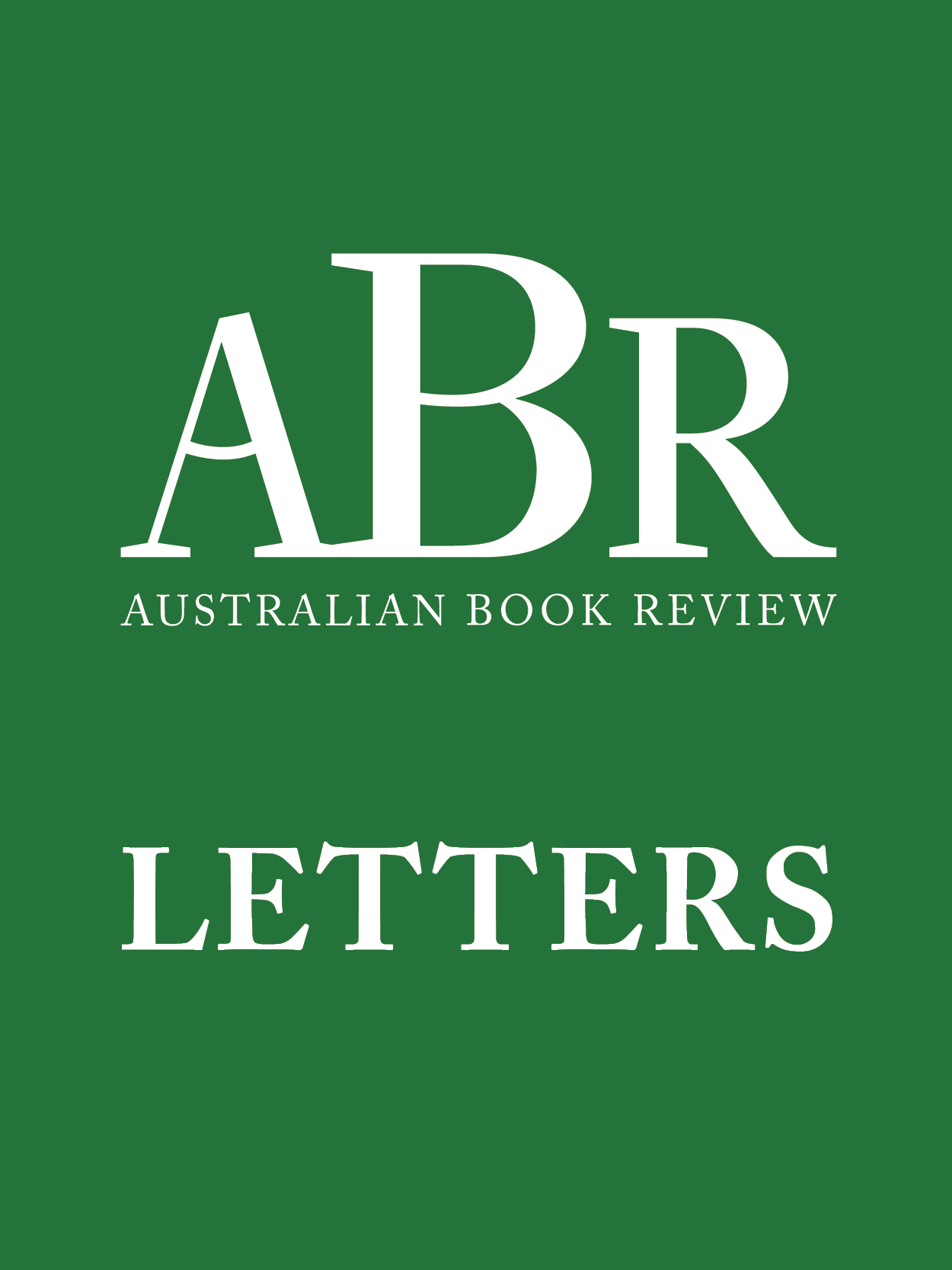
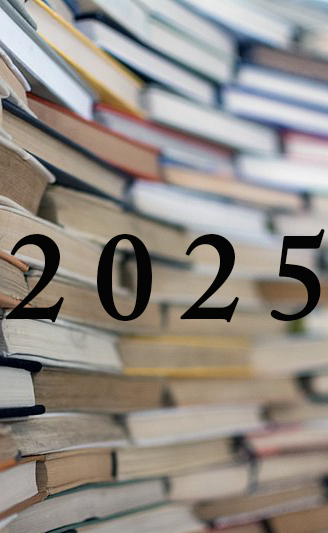
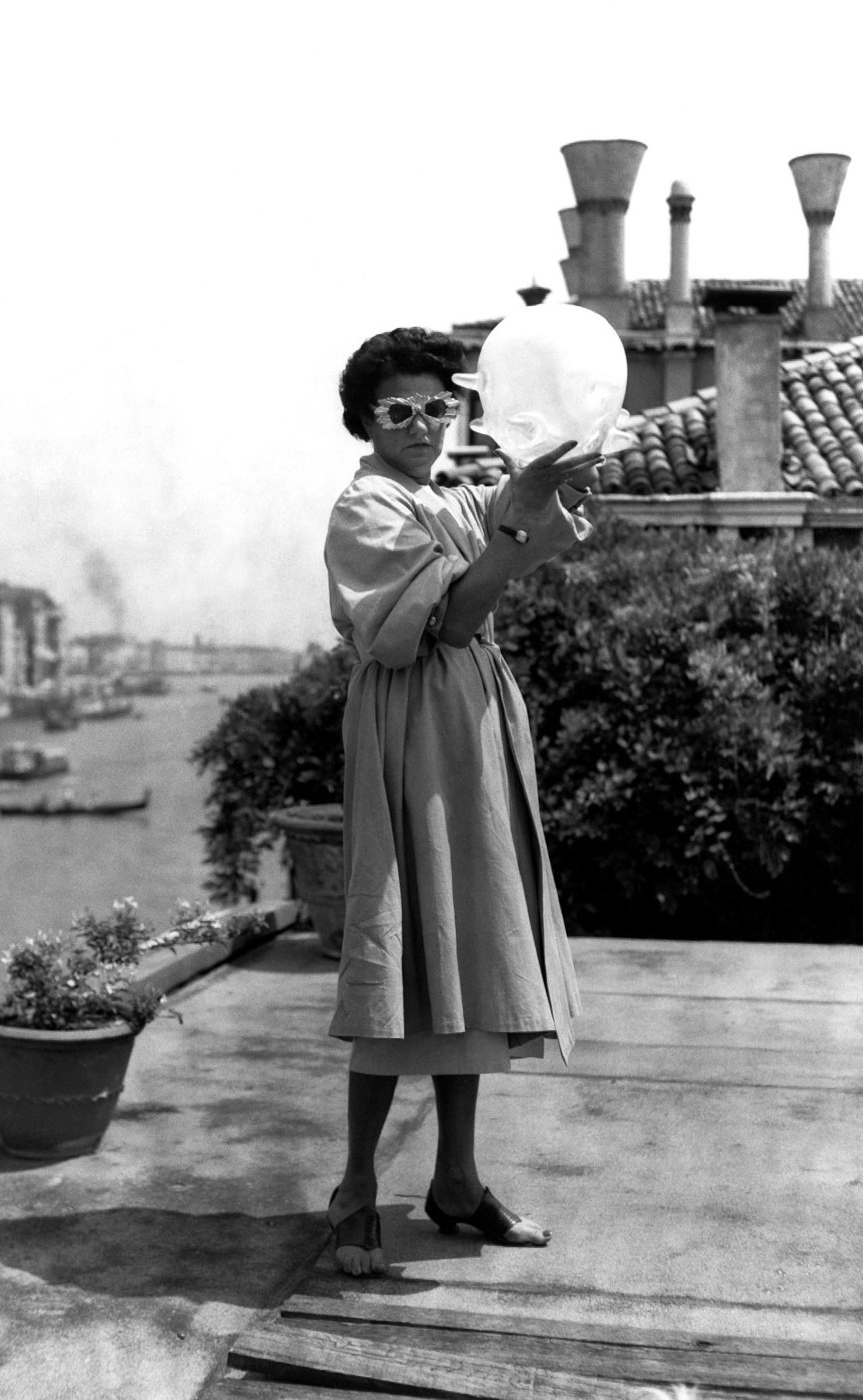
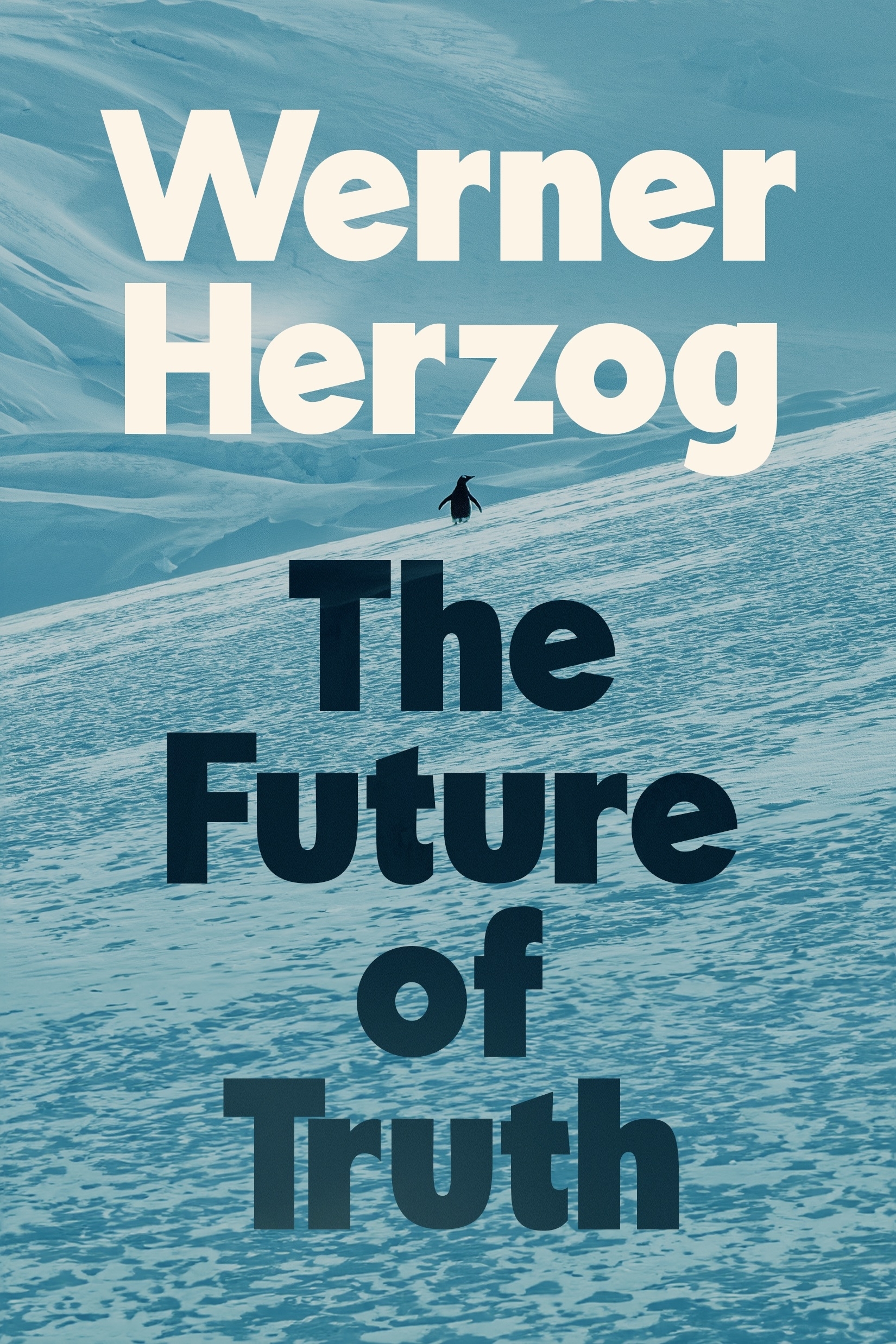
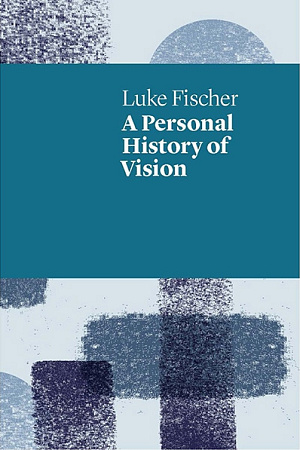
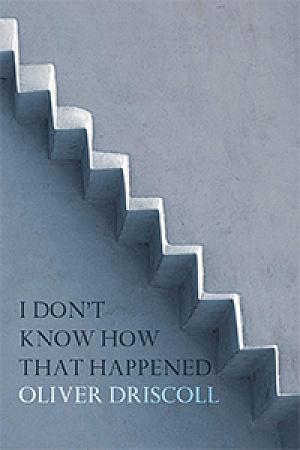
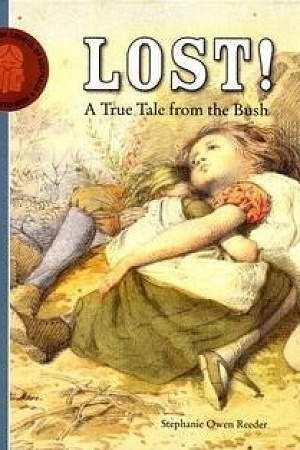
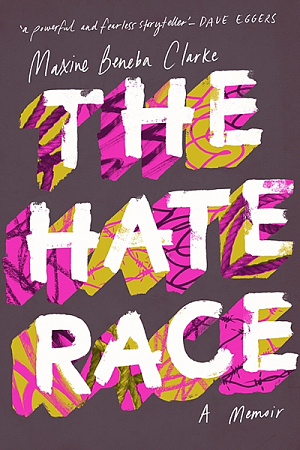
Leave a comment
If you are an ABR subscriber, you will need to sign in to post a comment.
If you have forgotten your sign in details, or if you receive an error message when trying to submit your comment, please email your comment (and the name of the article to which it relates) to ABR Comments. We will review your comment and, subject to approval, we will post it under your name.
Please note that all comments must be approved by ABR and comply with our Terms & Conditions.